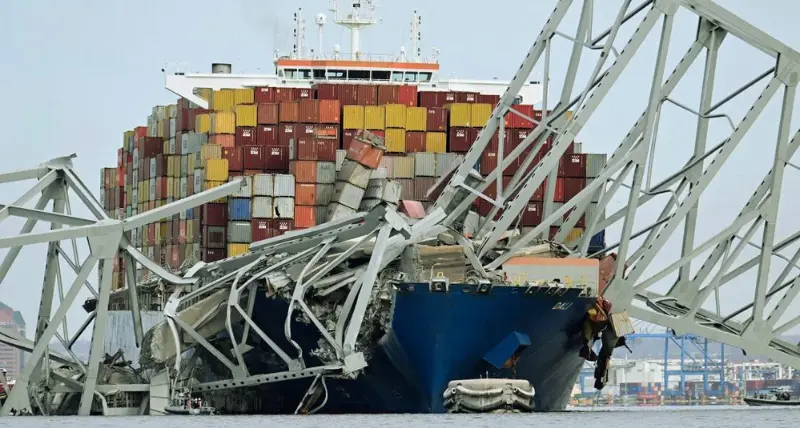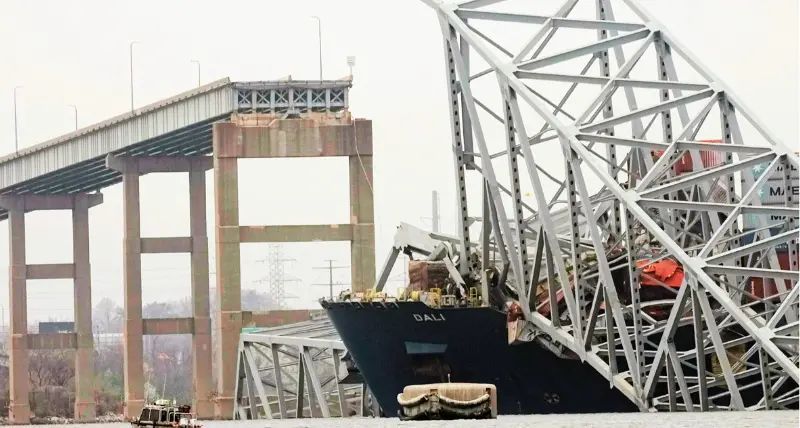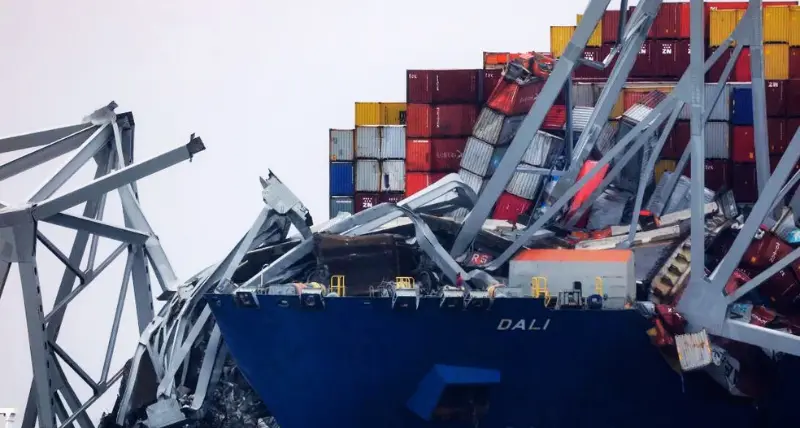NTSB Timeline: Hours, Minutes, and Seconds
- Ship departs Seagirt Marine Terminal at approximately 12:39 a.m.
- Enters Fort McHenry Channel by 1:07 a.m.
- At 01:24:59 a.m., audible alarms sound on the ship’s bridge audio, VDR stops recording ship system data briefly but continues recording audio using an alternative power source.
- 01:26:02 a.m.: VDR resumes recording ship system data, capturing steering commands and rudder orders on audio.
- 01:26:39 a.m.: Ship’s pilot requests assistance from tugboats via VHF radio.
- Pilot contacts Maryland Transportation Authority regarding blackout.
- Around 01:27:04 a.m.: Pilot orders port anchor dropped and issues additional steering commands.
- Around 01:27:25 a.m.: Pilot reports vessel’s power loss and approach to the bridge via VHF radio.
- Transit authority duty officer orders closure of traffic on the bridge.
- Around 01:29 a.m.: Ship’s speed recorded just under 8 miles per hour.
- From 01:29 a.m. to approximately 01:29:33 a.m., VDR audio records collision sounds.
- MDTA dash cameras show bridge lights extinguishing.
- 01:29:39 a.m.: Pilot notifies US Coast Guard of bridge collision.
In a recent press briefing, federal investigators shed light on the moments leading up to a massive cargo ship losing power and colliding with Baltimore’s Francis Scott Key Bridge. This incident, which caused significant damage, prompted urgent calls for assistance from the ship’s pilot and swift action from authorities to clear the bridge.

Urgent Distress Call and Traffic Control Measures in Baltimore Bridge Collision
Just moments before the collision, the ship’s pilot radioed for assistance, signaling distress. This call spurred immediate responses, with police swiftly halting traffic on the bridge, a move credited with potentially saving lives.
Scenes of Devastation and Loss
During their initial assessment, investigators witnessed the extensive damage inflicted upon the bridge. This wreckage serves as a stark reminder of the tragedy’s human toll, with families mourning the loss of their loved ones.
Timeline Reconstruction
Using data from the ship’s voyage recorder, investigators pieced together a timeline of events leading up to the collision. However, comprehensive analysis requires gathering extensive physical evidence and conducting witness interviews, a process that will take several months.

Challenges in Recovery Operations
Recovery efforts face numerous challenges, including adverse weather conditions and the presence of hazardous materials aboard the vessel. Salvage crews must navigate these dangers as they work to retrieve victims and clear debris from the scene.
Impact on Economy and Supply Chain
The destruction of the bridge and subsequent port closure will have significant economic repercussions, affecting both local and national supply chains. The closure of Baltimore port, a major hub for automotive transportation, poses logistical challenges that will require substantial efforts to overcome.
Tragic Loss of Lives
The collision claimed the lives of several individuals, including construction workers who were on the bridge at the time of the accident. Recovery operations continue as authorities work to bring closure to the victims’ families.
Infrastructure Evaluation
This incident underscores the need to reassess the resilience of aging infrastructure against modern shipping demands. As vessels grow in size, ensuring the structural integrity of bridges becomes increasingly vital to preventing similar disasters in the future.
Investigating Prior Incidents
Questions have arisen regarding previous issues involving the ship and its management company. Past incidents, both onboard and managed by the same company, raise concerns about safety protocols and maintenance standards.
Read also: Baltimore Key Bridge Collapses in Patapsco River After Ship Collision
Rebuilding and Recovery Efforts
Efforts to rebuild the bridge will require significant time and resources. However, authorities are committed to restoring essential transportation routes and providing support to affected communities and industries.
In breif
As investigations continue and recovery efforts persist, the aftermath of the bridge collision serves as a sobering reminder of the importance of infrastructure safety and preparedness in the face of evolving maritime challenges.

